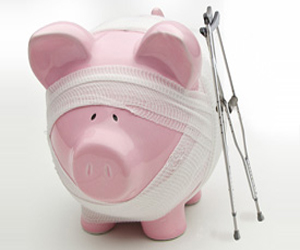Send this article to a friend:
July
20
2021

Send this article to a friend: July |
 |
Charts For A Crazy World: Did Investors Just Realize Their Problems Are Unfixable?
But that’s where the similarity ends. As the above chart shows, 1970s indebtedness was relatively modest as a percentage of GDP, which gave that financial system the resiliency to withstand the double-digit interest rates necessary to throttle inflation and bring things back into balance. Today, debt in both nominal terms and as a percentage of GDP is off the charts, which means even modestly higher interest rates would bankrupt the world. So what tools does that leave for today’s would-be monetary maestros? None whatsoever. And when it becomes clear that our financial mess will have to be resolved via market forces rather than government manipulation, things might go, um, non-linear. In spite of the above (or maybe because of it, who knows?) capital has been pouring into equities, one of the highest-risk asset classes on the traditional investment spectrum. As an example of how crazy things have gotten, Larry Fink, CEO of giant investment company BlackRock, now recommends that would-be retirees allocate 100% of their nest eggs to equities.
Meanwhile, junk bonds — nearly as volatile as equities — are on fire, now yielding the least ever (which is to say trading at record high valuations):
And of course houses — volatile and cyclical assets because they’re generally financed — are now more expensive than at the peak of the previous decade’s real estate bubble:
Combine negative interest rates, massive debt, and an investment community that’s wildly over-attached to risky assets, and the only reasonable expectation is chaos. In other words, lots more days like today:
|
Send this article to a friend:
 |
 |
 |